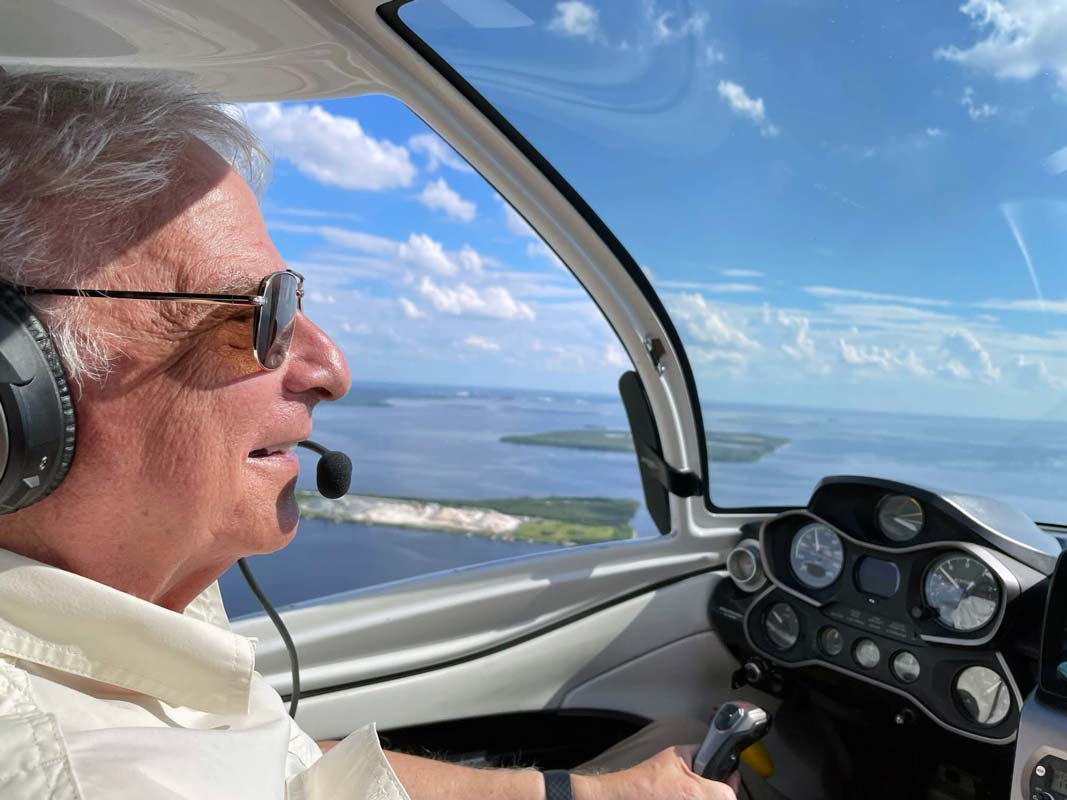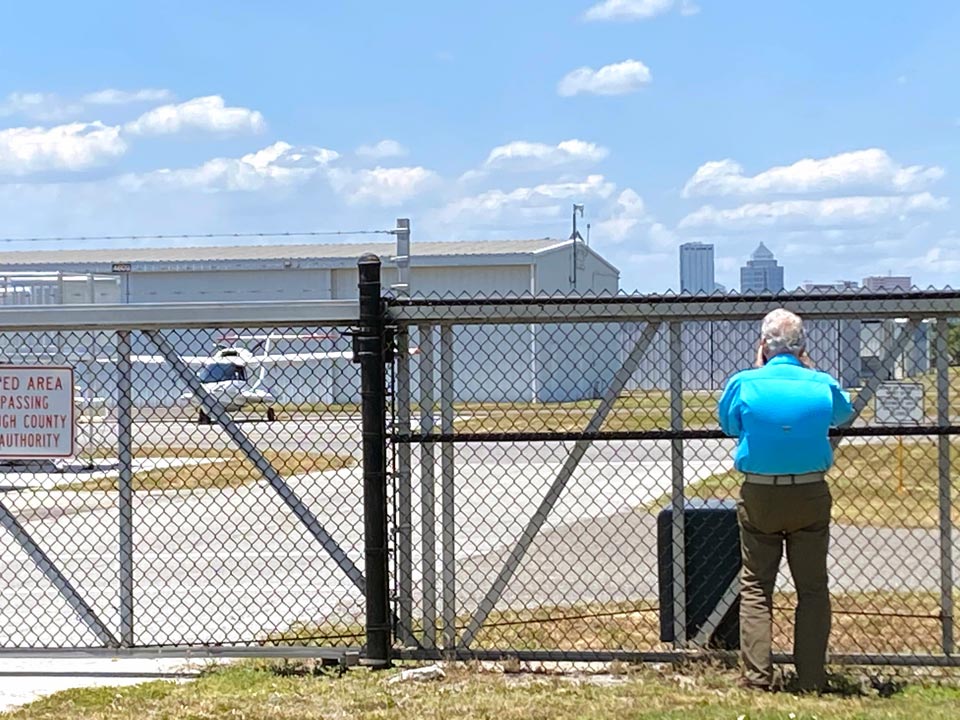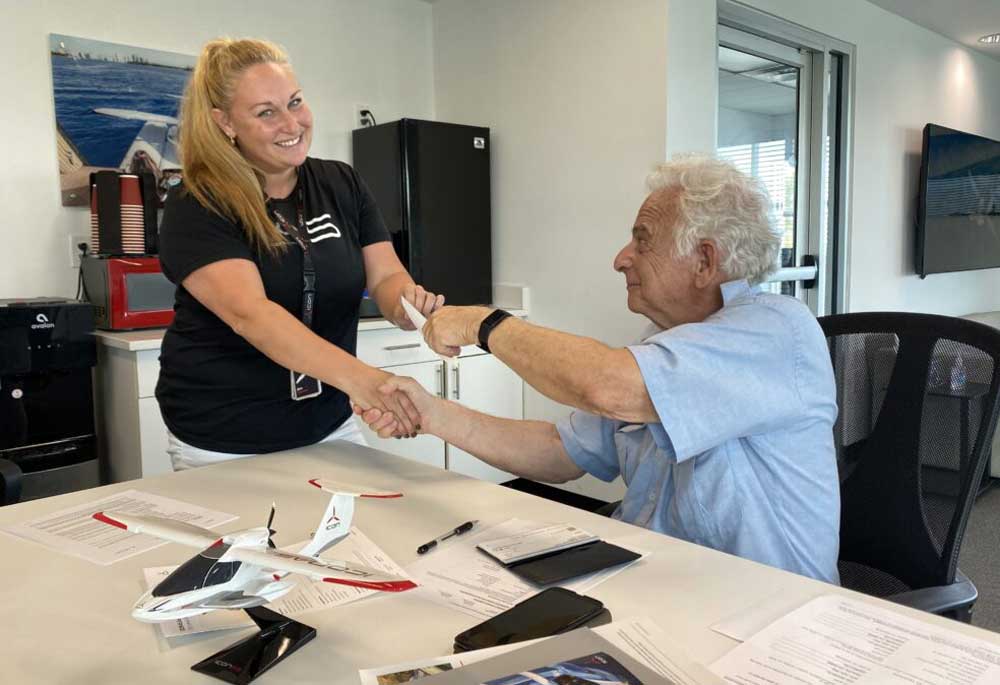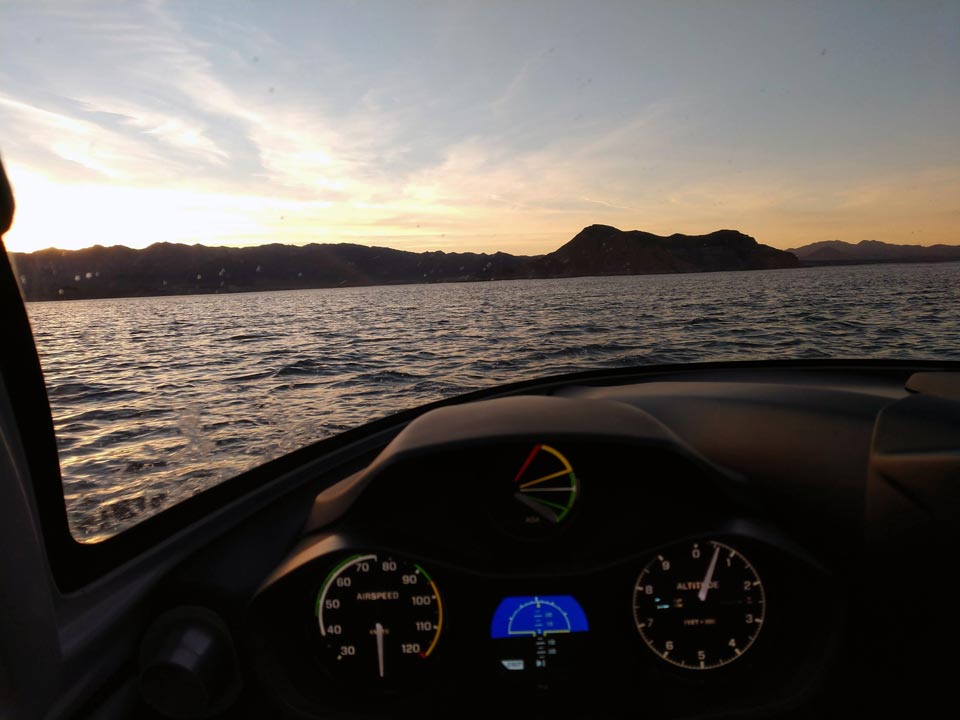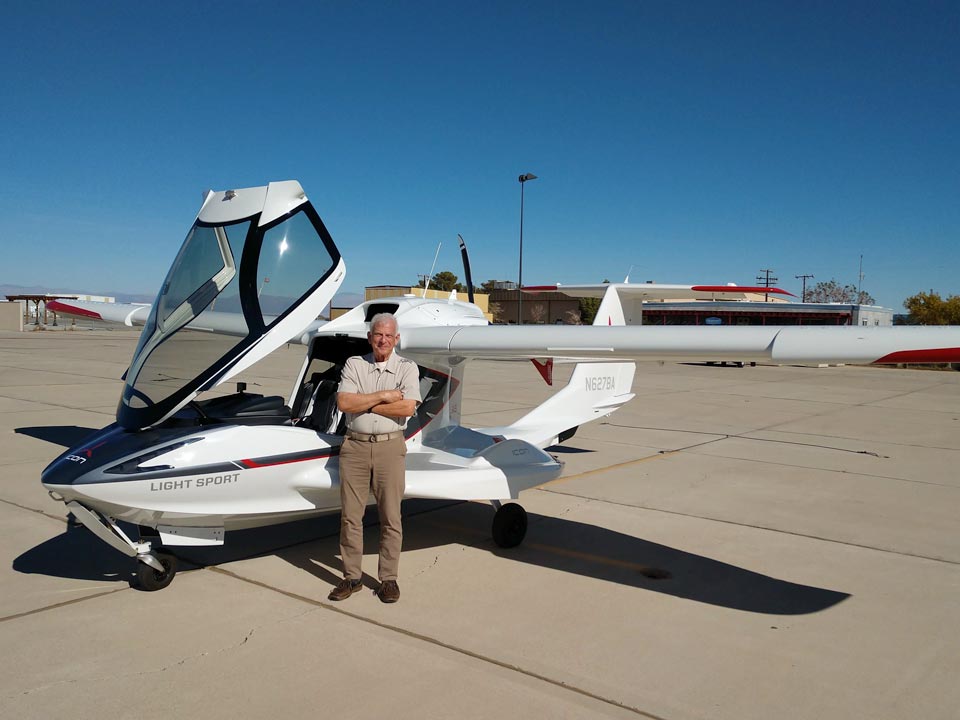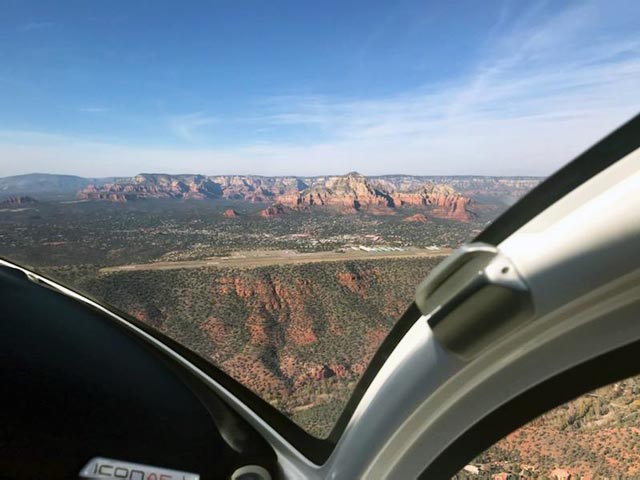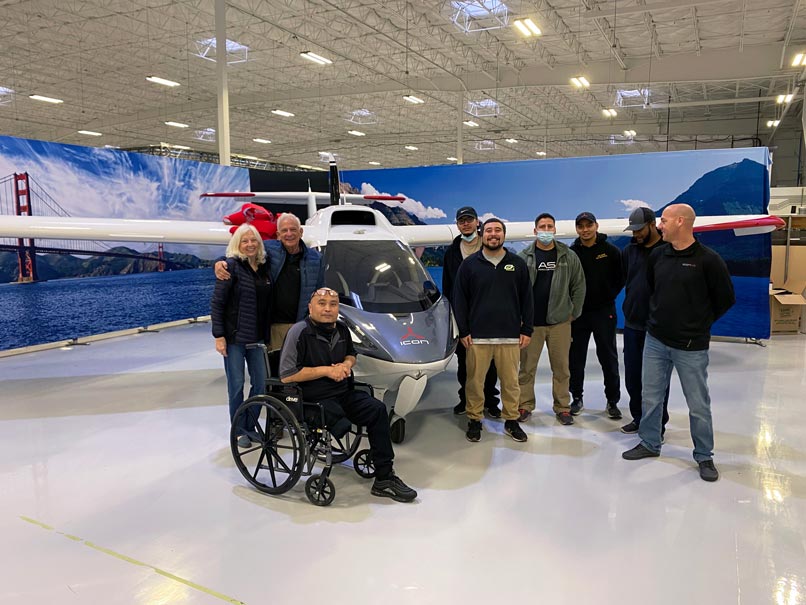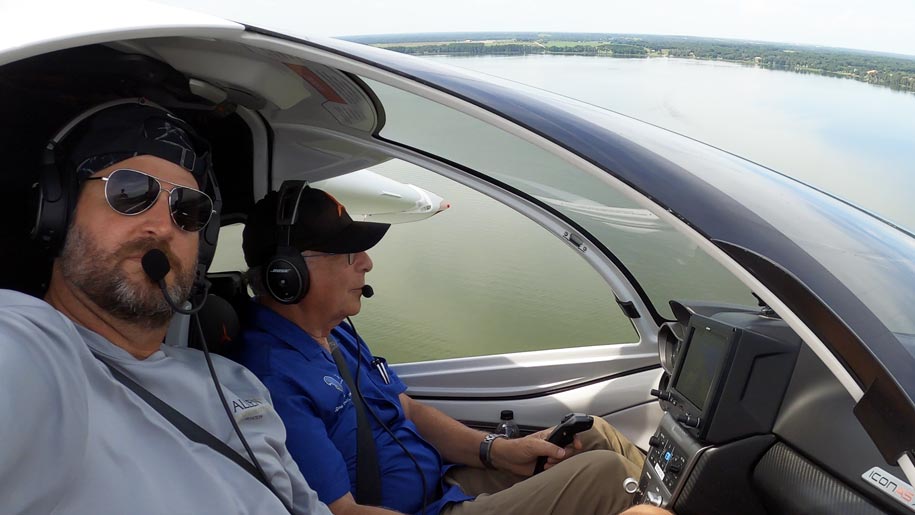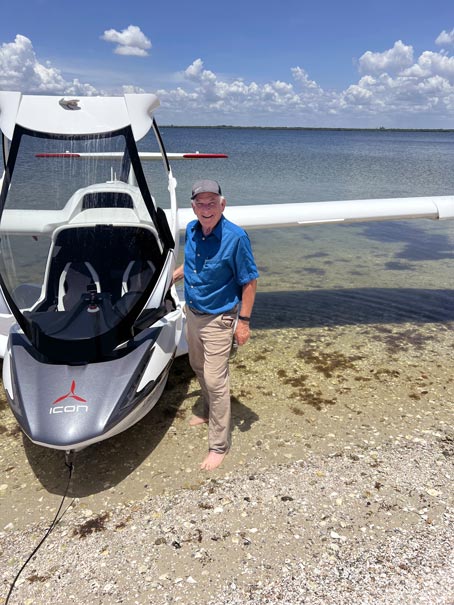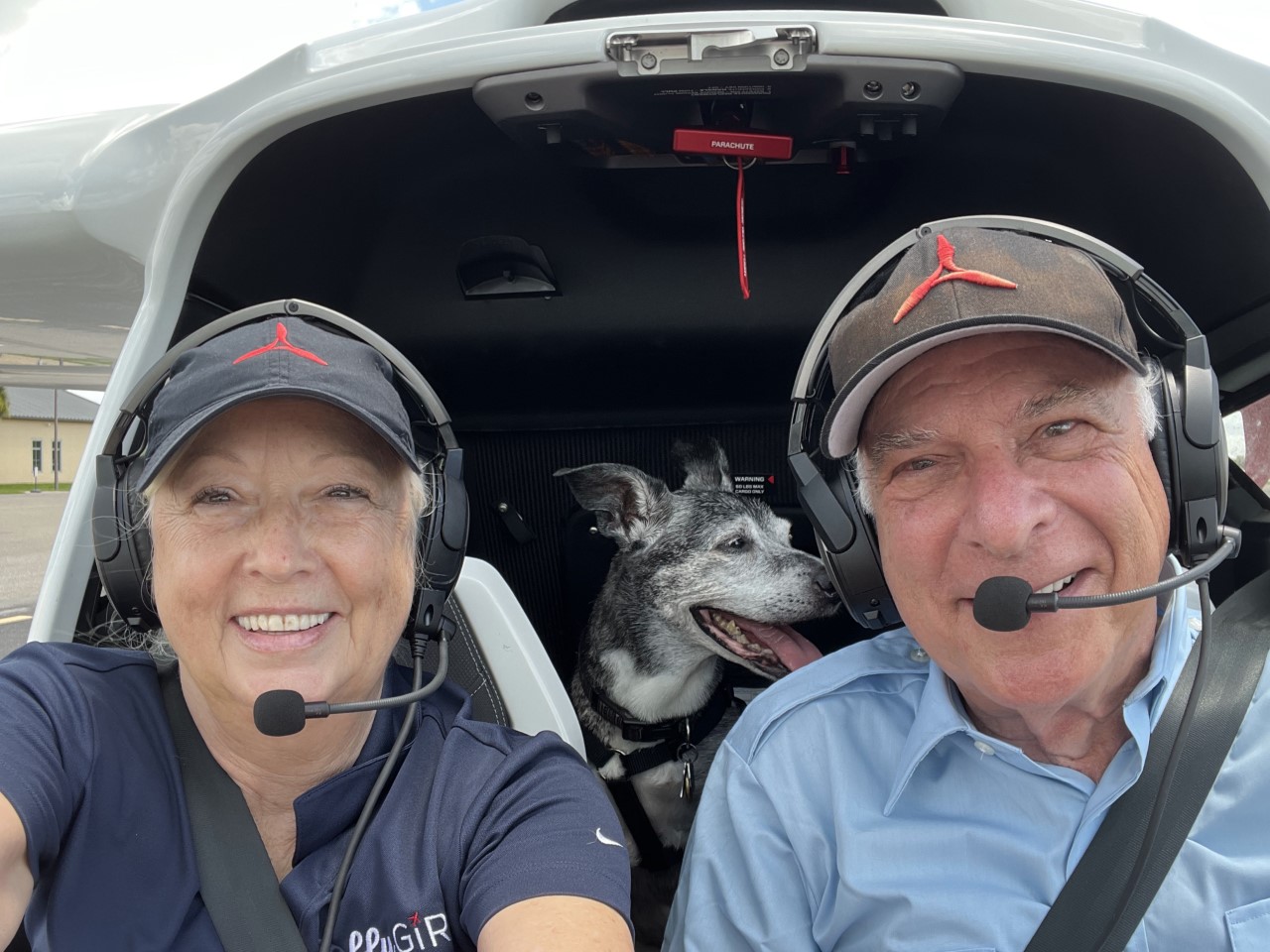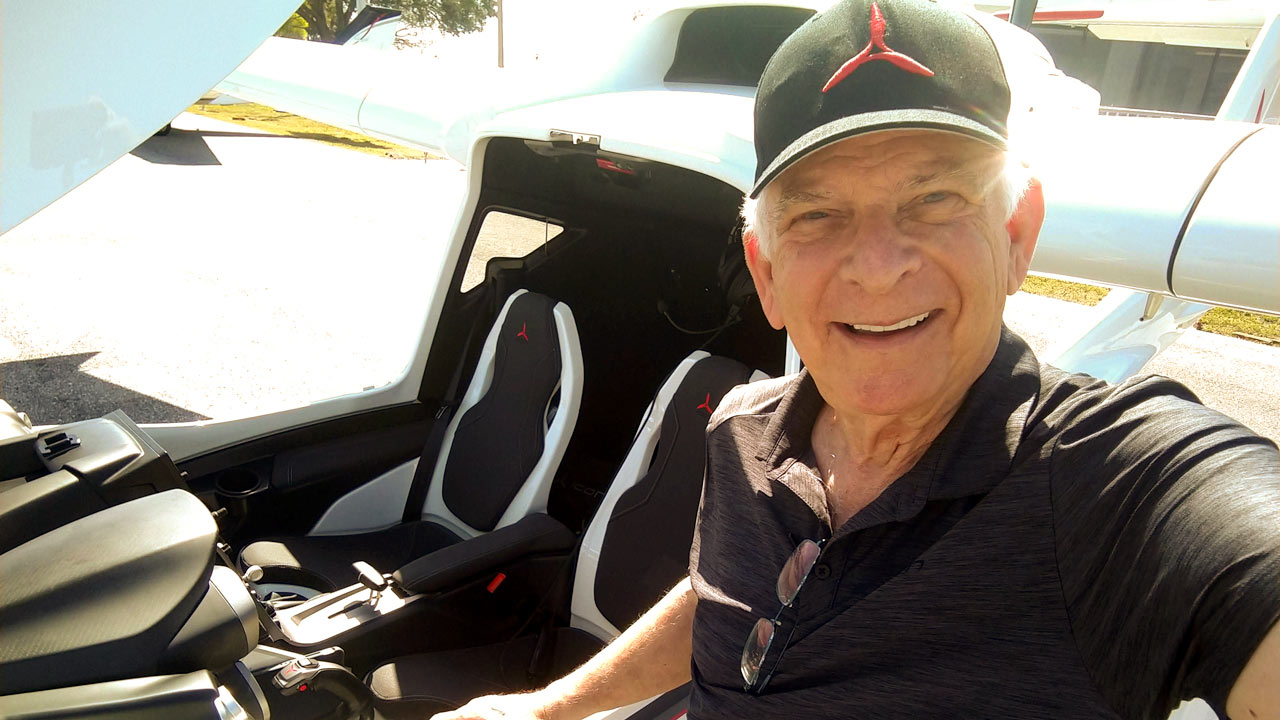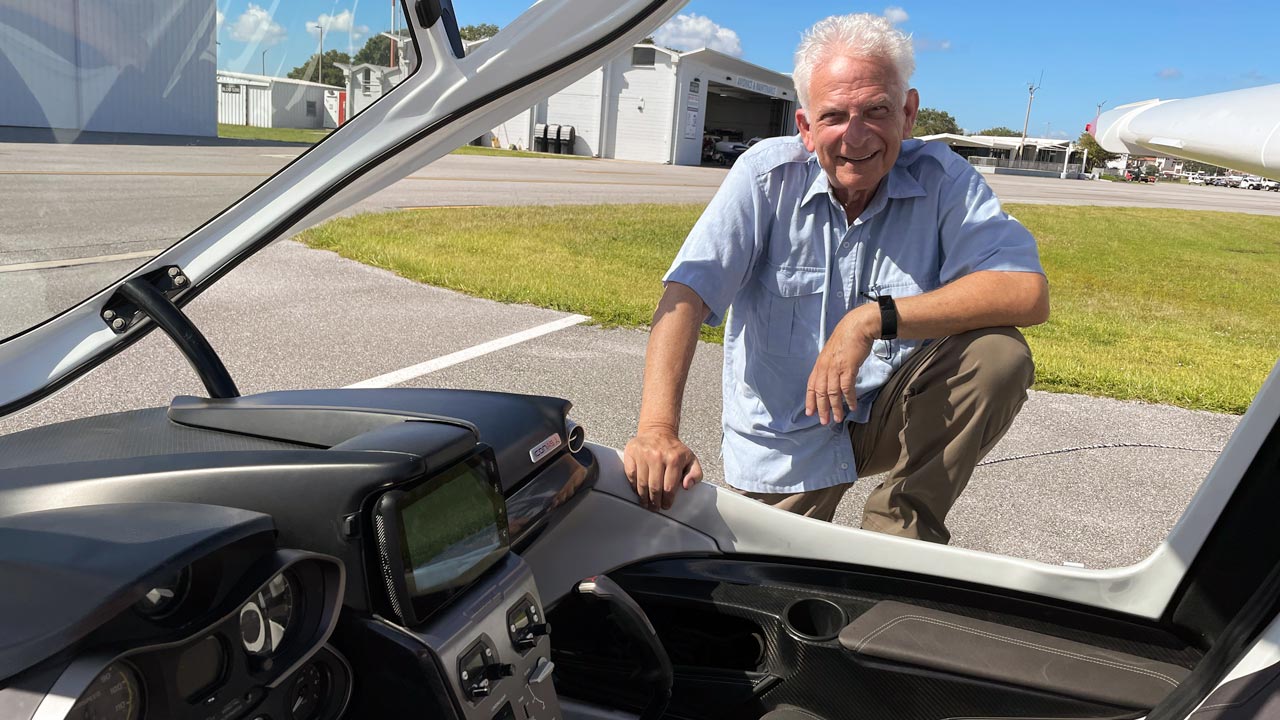Tell us about the first time you saw the ICON A5 and how it inspired you to become a pilot and an owner. How did you decide on the purchase?
I’ve always been up for new experiences, and becoming a pilot was on my list, but it was the sight of the ICON A5 on a Sunday in May 2021 that intrigued me to act. From the photos, I was taken with the aircraft as a work of art. From the description, I was impressed with the thoughtful engineering of the aircraft and its systems. It seemed to have all the capabilities I wanted: easy to fly, easy to handle on the ground, land on water and at airports, resistant to stalls, and an emphasis on safety. I bundled up my wife, Joy, and family dog, Lola, and drove to the ICON Flight Center in Tampa to stare through the airport fence at one sitting on the tarmac. Returning home, I sent an email off to ICON asking for a demo ride.
A quick response led to the right introductions for making a demo date. The people at ICON were thorough and supportive, knowledgeable and enthusiastic, informed and endlessly patient. Two hours later, I knew I wanted to fly and own one, even though there were serious considerations and conversations ahead.
What are some of the challenges you faced in purchasing your first aircraft?
Well, I was 80 years old, did not have a pilot’s license, had just finished chemo and radiation for cancer and was about to have surgery and more chemo for it as well, and insurance companies weren’t particularly interested. I didn’t live on a body of water and had no place to store the aircraft. And there were lots of other things I was already doing in life. The ICON folks were full of suggestions based on their considerable experience, very helpful. It was a big decision, and it meant making life changes. But I was ready. Lucky for me, my wife was the biggest cheerleader, urging me to fulfill this lifetime aspiration.
You ferried your new A5 with one of our IAFIs (Chris) from Vacaville to Tampa. What was that experience like? Did you have a favorite fuel stop or overnight city?
It was a terrific experience. By the time we took off from Vacaville, headed for Tampa, I had about 40 hours of flight training in the A5. Being on this trip did three major things for me. First, it gave me the chance to put all the flight maneuvers I had been learning into practice in a variety of situations, where I gained experience and confidence I otherwise would not have had for many months. We used to joke that my A5 came with an autopilot – me. I got to do about 85% of the flying. It was a tremendous learning event. If Chris didn’t like my landing, I got to do it again right there and then.
Second, I was exposed to the requirements of long-distance cross-country planning and flying in a small aircraft: weather ahead, refueling decisions, overnight locations, ground arrangements, winds aloft, maintenance of the aircraft, routes to fly, and what other aircraft were doing were all part of the mix.
Third, as a “road” trip, it was unparalleled. The 15 airports we stopped in were big and small, each of them fulfilling the images of their names like a Kerouac novel: Turlock, CA; Bakersfield; Inyoukern; Boulder City, NV.; Grand Canyon, Sedona, El Paso, Abilene, Baton Rouge, Atmore, AL; Tallahassee, and Ocala. We flew permitted corridors low over the Grand Canyon, landed on Lake Mead in slanting sunlight in the late afternoon, and did a series of splash and gos on the 17 miles of Lake Sam Rayburn in Texas. The variety of eating experiences was equally wide-ranging. Landing at Sedona, Arizona was a very exciting moment. In fact, Chris made me do it three times.
What are your thoughts on the aircraft completion facility in Vacaville?
Impressive. Every ICON owner should see the innovative thinking and professional engineering that goes into the building and assembly of the aircraft. We asked for each of the people present who worked on our #146, “Joyride,” to be with us during the hand-over ceremony.
You successfully went through the ICON Owner Flight Training, first for land operations towards your Sport Pilot Certificate. How would you describe the flight training at the IFC in Tampa?
The basic Sport Pilot License training was with Atlas Aviation at the same airport as the ICON Flight Center, Peter O. Knight airport, with whom ICON has a good working relationship. I may have been lucky, but all three of the CFIs I worked with there were very good. They let me find my own pace, kept after me to sharpen my skills, properly over-emphasized aviation safety, and were endlessly patient.
Now you can land on water too. How would you describe the seaplane endorsement training?
The low-altitude operations for water takeoffs and landings took a little getting used to, but the instruction was excellent, filled with tips and techniques that made the training both professional and a lot of fun. It didn’t hurt that the three ICON flight instructors who participated in the training had a world of experience among them, military and commercial. Idle taxi, step taxi, beaching, ramping –the measured tones, consistent reminders, good demonstrations, and thorough ground school made it all seem fairly easy.
What was it like to land on water for the first time on your own?
I had my wife and dog with me in the plane for my first landing after getting my seaplane endorsement. We flew up to Lake Thonotosassa, did the proper approaches and configurations, and landed on the lake surface just right. There was a thrill in the spirit that could only come from such an experience. The passengers agreed. Thrilling. Just thrilling.
Putting this whole ICON purchase and training experience together, what would you tell future ICON Owners? What would you say to the people contemplating if the A5 is the aircraft for them?
I was initially concerned about the amount to learn. When it came to learning navigation, weather, currents, and some operating systems, I have a good start with 50 years of sailing. The patient persistence, affirming teaching manner, and the underlying competence and confidence of the ICON and Atlas Aviation instructors made the challenges something to relish. I would not have imagined that I would be learning so much and having so much enjoyment at age 80.
Buying one’s first airplane is, I guess, always arduous. I found the purchase process was occasionally daunting. The contract was quite restrictive and drawn too much in their favor. However, ICON management proved open to discussion, my several drafts, and were considerate of my requests. At all times, the conversations were positive and worked to a mutual goal, an agreement satisfactory to both parties. Obviously, we got there.
The building and delivery of the aircraft ran well from my point of view. The ICON teams in Tampa, Vacaville, and even in Belgium responded pretty well to my questions. I see ICON as a young company with a leading-edge product, not without its start-up issues. But frankly, I opted to be a part of something exciting, forward-looking and fun. Whenever we did come to a bump in the road, the ICON folks were quick to handle it in a positive manner. I wish some of the boat purchases I have made over the years would have gone as smoothly.
For me, buying an aircraft was a major commitment, and it had to fit my own conception and expectation. I wanted an aircraft that would fly easily and often, land on water or land, offer fun and excitement, and be a very safe aircraft. I’m not sure I could have made a choice that would have been better.
Safety and Training Resources
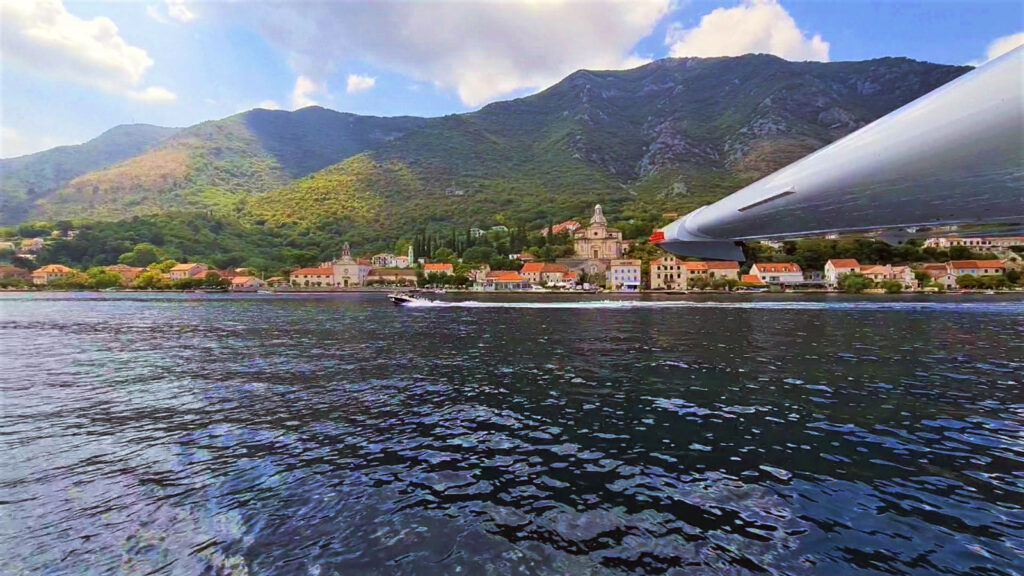
Flying the ICON A5 in High Density Altitude Environments
On even a cold day, operating in water environments at higher elevations provides some challenges that are important for A5 pilots to understand.
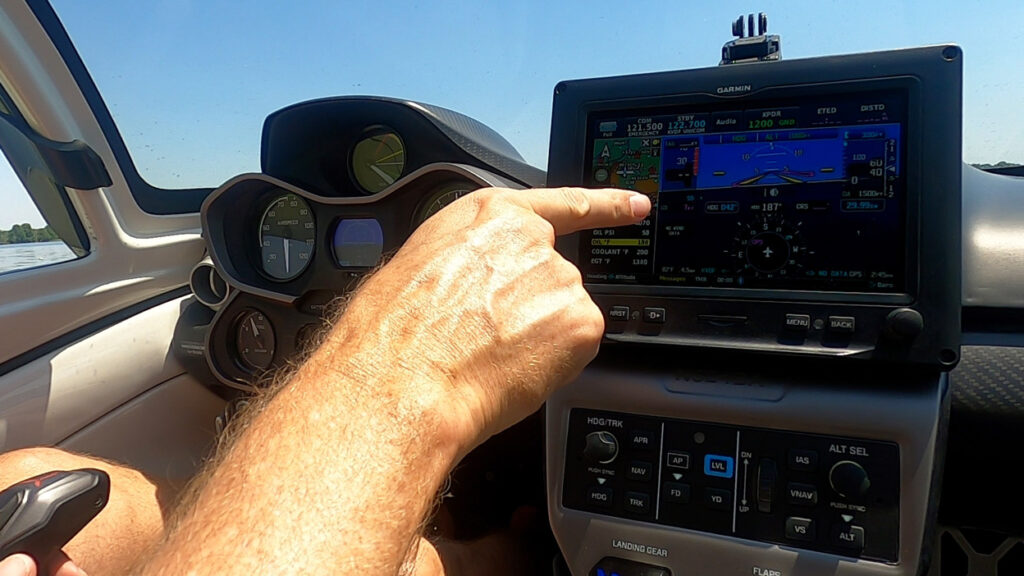
10 Hacks Every ICON A5 Pilot Should Know
With over 3000 hours in the ICON A5 collectively, our Tampa-based IFC Instructors compiled 10 Hacks every ICON pilot should know.
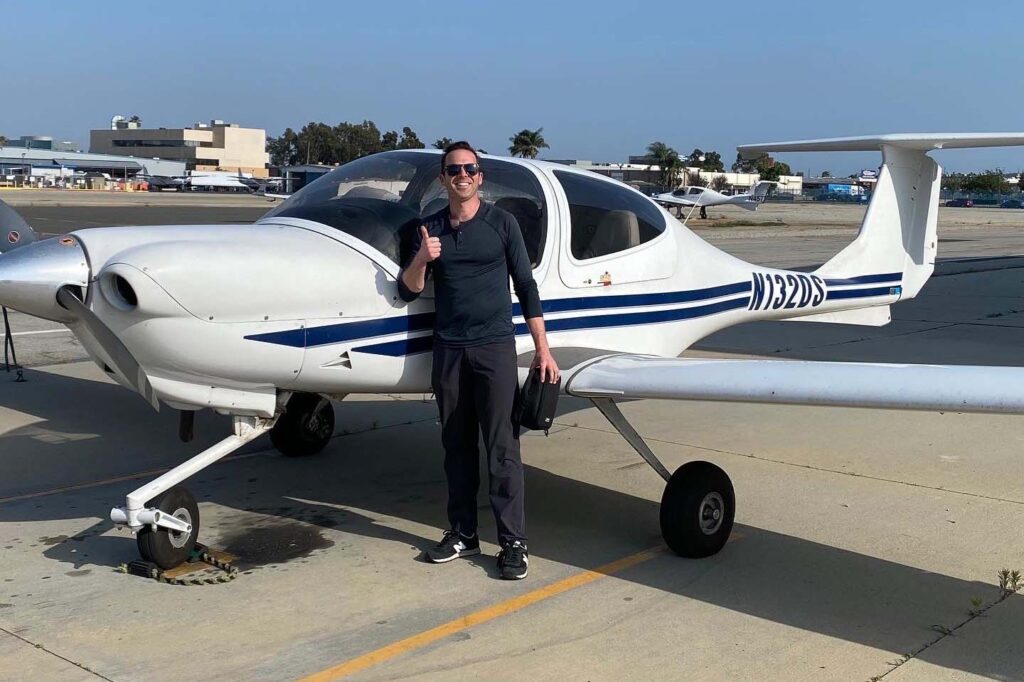
How I Found a Flight School Near Me
Finding a local flight school is quite daunting—many of the schools near me had the same aircraft, advertised private pilot training, and well, seemingly had plenty of flight instructors. How could I choose which would be the most efficient to not only earn my private pilot license?
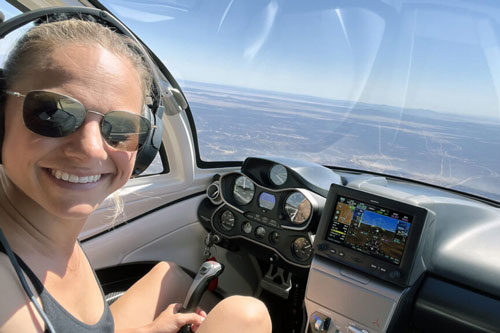
Flight Planning: Ferrying the ICON A5 from California to Michigan
The ICON A5 is a very unique aircraft with some incredible flight characteristics. When it comes to planning a cross-country flight, there are a few particular safety items to keep in mind. Here is a look at a ferry flight across the United States from ICON’s Marketing Manager.
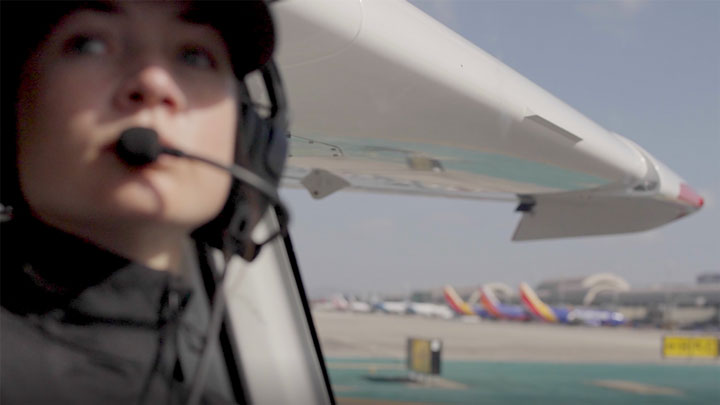
Reviewing Safety Considerations for Flying in Busy Airspace
For pilots who may be more familiar with flying at uncontrolled airports, flying in Class D, C, or B Airspace can be intimidating. If you are a Sport Pilot and want to broaden your horizons by seeking an additional endorsement in your logbook to fly in these areas, this video should offer an initial introduction for what to expect.
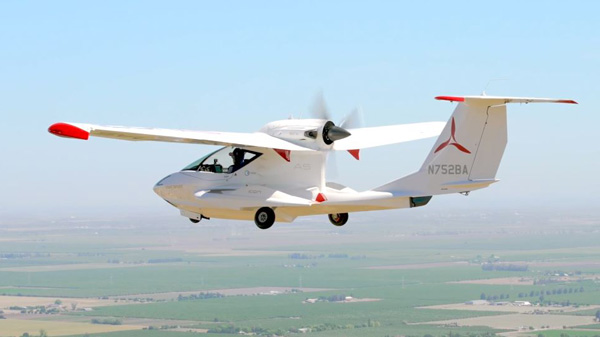
Safety Considerations for Landing with your Gear in the Correct Position
It seems simple enough: extend the landing gear when intending to land on a runway or other prepared surface, and retract the gear when landing on the water. The unfortunate truth is that accidents and incidents caused by landing with gear in the incorrect position occur far too frequently.
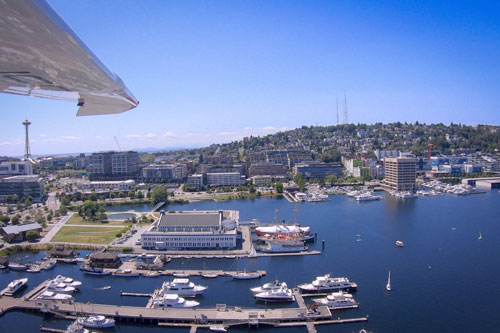
Landing the ICON A5 in Downtown Seattle | The Lake Union Approach
What allows the A5 to fly in this environment? What factors should a pilot consider to ensure this flight is performed safely? Flying the A5 in Seattle may be one of the most unique flights a pilot can experience in the country, especially considering how immersed the A5 makes you feel amongst the Seattle skyscrapers.
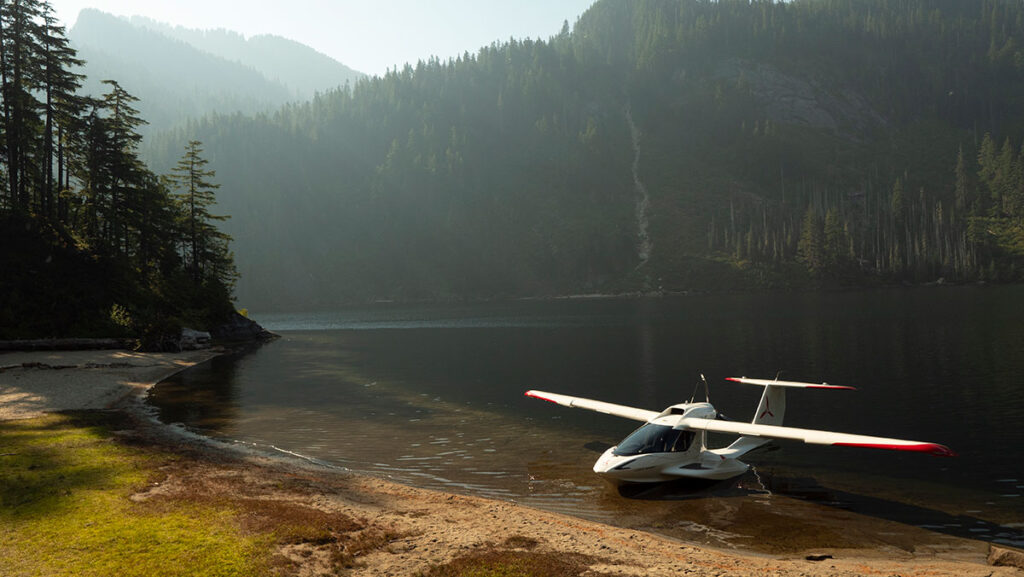
Flying the ICON A5 at Lake Isabel
An A5 Flight Instructor recently flew to one of the most popular seaplane destinations near Seattle. Watch how she planned her trip and approached a new area.
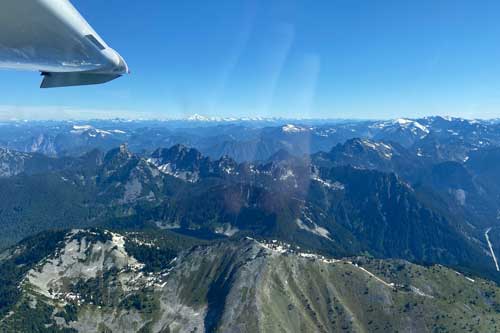
Flying the ICON A5 on a Cross Country Flight | Seattle to Spokane, WA
What’s the range of the ICON A5? It’s a question we at ICON Aircraft receive on a consistent basis. I recently had the chance to fly the A5 from Seattle to Spokane, WA, making a stop at Grant County International Airport.
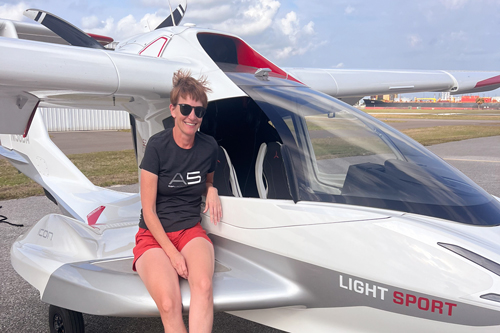
ICON Instructor Pilot Profile: Jo McPherson
Meet IAFI Joanna McPherson: A Mother of Six and a Civil Air Patrol Volunteer Inspired to Become a Pilot and an ICON Authorized Flight Instructor
